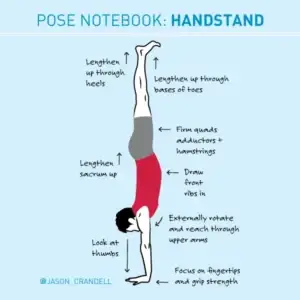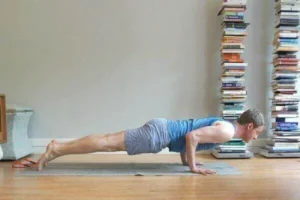For teachers, yoga classrooms are where we work. It’s where we share our passion for the practice, where we earn our livelihood, and where we help students learn skillful ways to manage the human condition. Of course, the studio is also where students come to learn and practice. Students have the reasonable expectation that they can be themselves and experience a safe and supportive environment. And, they can –if they’re reasonable. And, students are reasonable — usually.
Like all group environments — especially where the general ethos is “do whatever makes you feel good,” and where the stated fire-code allotment for number of humans that can safely fit into a room is regularly ignored — the social etiquette of YogaLand can be open to interpretation. From time-to-time, students go off the rails and it can be challenging to know how to respond. In Part One, I talked about students who “do their own thaaang” and students who are so physically satisfied with their practice that they serenade class with moans and groans that are better suited for more intimate environments.
As teachers, we need to ask ourselves two related questions when we encounter questionable behavior in a class: First, is the behavior truly a problem for the group? And second, do we need to take control of the situation to protect the overall group experience, or do we need to let it ride?
Now, let me paint a few scenes.
See also When Students Behave Badly, Part I
SHIRTLESS, SWEATY, AND PROXIMATE
The first time I taught at Power Yoga Germany in Hamburg, Dirk, the co-owner of the studio, made an announcement before my workshop. After the announcement, he told me in English what he just said to German-speaking students. He said, bluntly, that the studio has two rules and they’re both for men. Number one, he said, “We have two bathrooms and they’re both co-ed, so men need to sit down when they piss because men can never hit the target and women don’t need to put up with such inaccuracies.” Second, he said, “Men, when you get hot and start to sweat, you might want to take your shirt off. But, guess what? This isn’t allowed because the woman next to you doesn’t want to shower in the sweat that will be pouring off your body.”
Just when you thought chivalry was dead, right? I’m not going to expound on the first rule, but as a married man I can assure my male readers that hygiene in a shared bathroom is appreciated. So, take this consideration to heart if you’re a man using shared facilities. When it comes to the “Yoga: men gone wild, edition,” I don’t personally have a problem with men going topless in class. But, heavy-sweaters (men or women), please grab a towel and wipe down the region during and after class. And, teachers, you’ve got to get on your students to mop up their scene. It’s not just basic social etiquette. Students that are sweat on by their neighbor — or slip and slide on someone else’s sweat while walking to the restroom — are much likely to reconsider coming to another public class. So, teachers, if the need arises, simply grab a towel (nearly every studio has them), hand it to sweaty john or sweaty betty, give a quick glance toward their puddle and nicely say, “If you don’t mind.”
SAVASANA? NO THANKS!
I’m going to be honest, I don’t mind when people leave before Savasana. Yes, it’s important. Yes, it’s part of the practice. Yes, we live in a vata-deranged culture and everyone needs Savasana. I’m not going to argue against those points. But, some people have children to pick up at an exact time, or they have an incredibly brief window between jobs. Or, they simply can’t handle laying on the ground for 6-10 minutes in a room full of other adults. I genuinely have empathy for all of these situations.
But, I’ve got to tell you, it takes every single second of patience that I’ve accrued in 20 years of practicing yoga, to keep my blood pressure from spiking when someone leaves in the middle of Savasana — or, worse, 10 seconds before Savasana is over! There’s a natural settling-in phase when students are transitioning to Savasana. I don’t think students are disturbed when others leave during the onset of savasana because there’s already plenty of sound and rustling while everyone prepares for their 10-minute rest. When someone leaves in the middle of Savasana it’s a much more significant disturbance. And, it’s almost always made worse by the student leaving because they’re trying to be quiet, which translates to 45 seconds of hearing a mat sloooooowly peeling off the ground, 45 seconds of floor boards creaking while the student walks to the back of the room to collect their belongings, 90 seconds of the belongings shifting around until the student is able to put their handmade eye-bag away, and another 30 seconds of the squeaky studio door being closed.
As teachers, there’s almost no way to guarantee that someone doesn’t occasionally bail half-way through Savasana. And, hey, maybe someone just remembered that they’re needed on a conference call or whatever. We’re all human and this is going to happen. But, there are two things you can do to minimize these incidents. First of all, end your !@#$%^% classes on time!!! Don’t expect that everyone in your class can go over by 5 minutes or more because you took too long to get to your peak pose! We’ve all gone over — I’ve gone over — but I think it’s incredibly important to end class when the schedule says that class is over.
The second thing you can do is make periodic announcements in your class that you’ll be ending on time, that you’d prefer students to stay for Savasana, but if anyone needs to leave early, do so before Savasana begins or when class is over. Namaste.
SHOWER, SOAP, AND DEODORANT? NOPE, I’D RATHER NOT!
We’ve all forgotten to wear deodorant. And, sometimes, the deodorant that we’re wearing is having a bad day and is not up to the task of masking our wild side. Perhaps you believe that deodorant is evil and that it masks your natural pheromones. Fine. All those things are fine. But, attempting to have a body odor that won’t knock a pigeon out of mid-air while it’s cruising past the window of the yoga studio is, I believe, part of the modern social contract.
As a yoga teacher, I’ve never approached someone about their odor. As a studio manager, I have. Fortunately, it’s very rare that someone’s odor rises to level of a necessary conversation. But, it does happen. I can think of three occasions over a 5-year period where, as a yoga director, I had enough complaints from the community about people’s odor that I needed to intervene. It was a high-end fitness facility and the problem was that each of the individuals involved were doing intensive training before coming to class. They’d come to class directly after their training and arrive in a remarkably funky state. This wasn’t once or twice. This was a few classes every week for months. Eventually, in each of the scenarios, I had to address the individuals. It was difficult, but managers have difficult jobs sometimes.
So, if you have a student whose odor is compromising the group experience, take it to your manager and ask them to have a conversation with them. If you prefer to handle it yourself, go for it. Be nice. Of course.
RING-A-DING-DING! ANYBODY THERE????
Cell phones are going to ring, buzz, ding, quack, play questionable ring tones, like “Oops I didn’t again, I played with your heart…” during class. Yes, one Saturday morning during Savasana my class was serenaded with a Britney Spears ringtone. And, yes, I’ve taught yoga for a long time.
I ignore 999 out of 1,000 notifications that I hear during class. This is yoga, so let’s focus even if someone’s bag is chirping. But, on occasion, teachers will realize that either A) the person that’s calling the phone nestled in someone’s purse is not going to give up, or B) it’s not a ringtone making that noise, it’s an alarm. Here’s what I’ll say during class in these situations: “Hey, I know everyone has phones and we all forget to turn them to airplane mode on occasion. But, if this phone is still going off during Savasana, everyone is doing pushups for 10-minutes, okay? So, even if you are 100% sure that it’s not your phone that is making this racket, please go check.”
That gets the job done.
I want to conclude with a reminder that this two-part series is written with love. Seriously. I wouldn’t have a fraction of the life that I have without my students and I know that most teachers feel the same way. At the same time, this is our workplace and it’s important that we have the tools to manage some of challenges that happen while we’re teaching. Be loving, be clear, and have boundaries.




